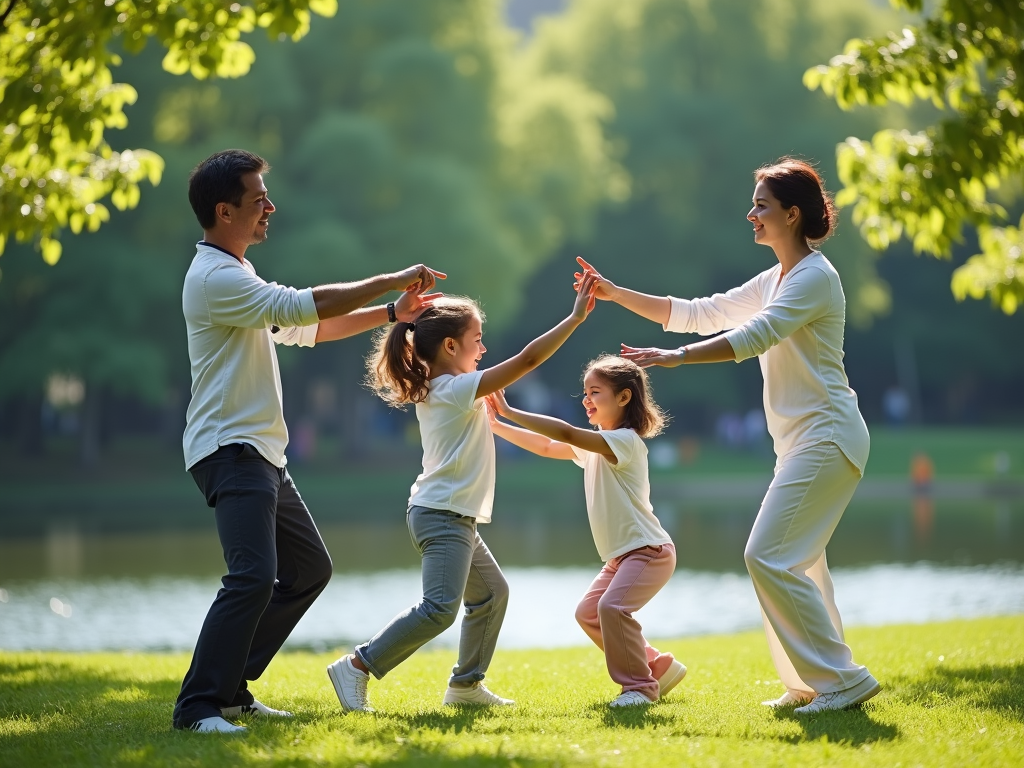In today's fast-paced world, finding ways to connect with our loved ones while prioritizing health can be challenging. Enter tai chi, an ancient Chinese practice that offers a unique blend of physical exercise, mental focus, and spiritual growth. This article explores how tai chi can be a powerful tool for family wellness and longevity, bringing generations together in a shared journey towards better health and deeper connections.
What is Tai Chi?
Tai chi, often described as "meditation in motion," is a gentle form of exercise that involves a series of slow, flowing movements. Originating in China as a martial art, it has evolved into a popular practice for health and relaxation. Tai chi is accessible to people of all ages and fitness levels, making it an ideal activity for families to enjoy together.

The Benefits of Tai Chi for Family Wellness
Tai chi offers a wide range of benefits that can enhance family wellness in multiple ways:
1. Stress Reduction
In our hectic lives, stress can take a toll on both adults and children. Tai chi's slow, deliberate movements and focus on deep breathing can help calm the mind and reduce stress levels. When practiced as a family, it becomes a shared relaxation technique, fostering a peaceful home environment.
2. Improved Physical Health
Tai chi is excellent for improving balance, flexibility, and strength. For older family members, it can reduce the risk of falls and injuries. For younger ones, it enhances coordination and body awareness. The low-impact nature of tai chi makes it safe for everyone, from grandparents to grandchildren.
3. Mental Well-being
The meditative aspect of tai chi can boost mental clarity and emotional balance. It teaches mindfulness, helping family members to be more present and attentive in their daily lives. This can lead to better communication and understanding within the family unit.
4. Bonding and Connection
Practicing tai chi together creates opportunities for quality time and shared experiences. It encourages non-verbal communication through synchronized movements, fostering a sense of unity and teamwork. These shared moments can strengthen family bonds and create lasting memories.
5. Promoting Longevity
Regular tai chi practice has been linked to increased longevity and improved quality of life, especially in older adults. By introducing tai chi early, families can instill healthy habits that may contribute to longer, healthier lives for all members.

How to Incorporate Tai Chi into Your Family's Wellness Routine
Bringing tai chi into your family's life doesn't have to be complicated. Here are some practical tips to get started:
-
Find a Local Class: Look for tai chi classes in your community that welcome families or offer sessions for different age groups. Many instructors are happy to accommodate mixed-age groups.
-
Practice at Home: Use online resources or instructional videos to learn tai chi together at home. Start with short sessions and gradually increase the duration as everyone becomes more comfortable.
-
Make it a Family Outing: Take your tai chi practice outdoors. Parks, beaches, or even your backyard can be great settings for family tai chi sessions.
-
Set Personal Goals: Encourage each family member to set their own goals for tai chi practice, whether it's mastering a particular movement or practicing a certain number of times per week.
-
Integrate with Other Activities: Combine tai chi with other family wellness activities, like hiking or yoga, to create a holistic approach to health.
Tai Chi for Different Age Groups
One of the beauties of tai chi is its adaptability to different ages and abilities. Here's how it can benefit various family members:
Children and Teens
-
Improves focus and concentration
-
Enhances physical coordination
-
Provides a healthy outlet for energy
-
Teaches discipline and patience
Adults
-
Reduces work-related stress
-
Improves posture and reduces back pain
-
Enhances overall fitness
-
Provides a mindful break from daily responsibilities
Seniors
-
Improves balance and reduces fall risk
-
Maintains joint flexibility
-
Boosts cognitive function
-
Provides gentle exercise for those with limited mobility

Overcoming Common Challenges
While tai chi is beneficial, families might face some challenges when starting out. Here's how to address them:
-
Lack of Time: Start with short, 10-minute sessions and gradually increase. Remember, consistency is more important than duration.
-
Different Skill Levels: Tai chi is non-competitive. Encourage each family member to progress at their own pace and celebrate individual improvements.
-
Initial Awkwardness: It's normal to feel a bit clumsy at first. Laugh together and remember that perfection isn't the goal—enjoyment and effort are.
-
Maintaining Interest: Keep things fresh by learning new movements or styles of tai chi. You can also incorporate music or practice in different locations.
The Science Behind Tai Chi and Longevity
Research supports the benefits of tai chi for longevity and overall health. Studies have shown that regular tai chi practice can:
-
Improve cardiovascular health
-
Enhance immune function
-
Reduce inflammation
-
Improve sleep quality
-
Boost mood and reduce symptoms of depression
These benefits contribute to a higher quality of life and potentially increased lifespan, making tai chi a valuable practice for families looking to invest in their long-term health.

Conclusion
Tai chi offers a unique opportunity for families to come together, improve their physical and mental health, and create lasting bonds. By incorporating this ancient practice into your family's wellness routine, you're not just investing in your current well-being but also laying the foundation for a healthier, more connected future. Whether you're looking to reduce stress, improve physical fitness, or simply spend quality time together, tai chi provides a path to harmony and longevity for the whole family.
Discuss Here